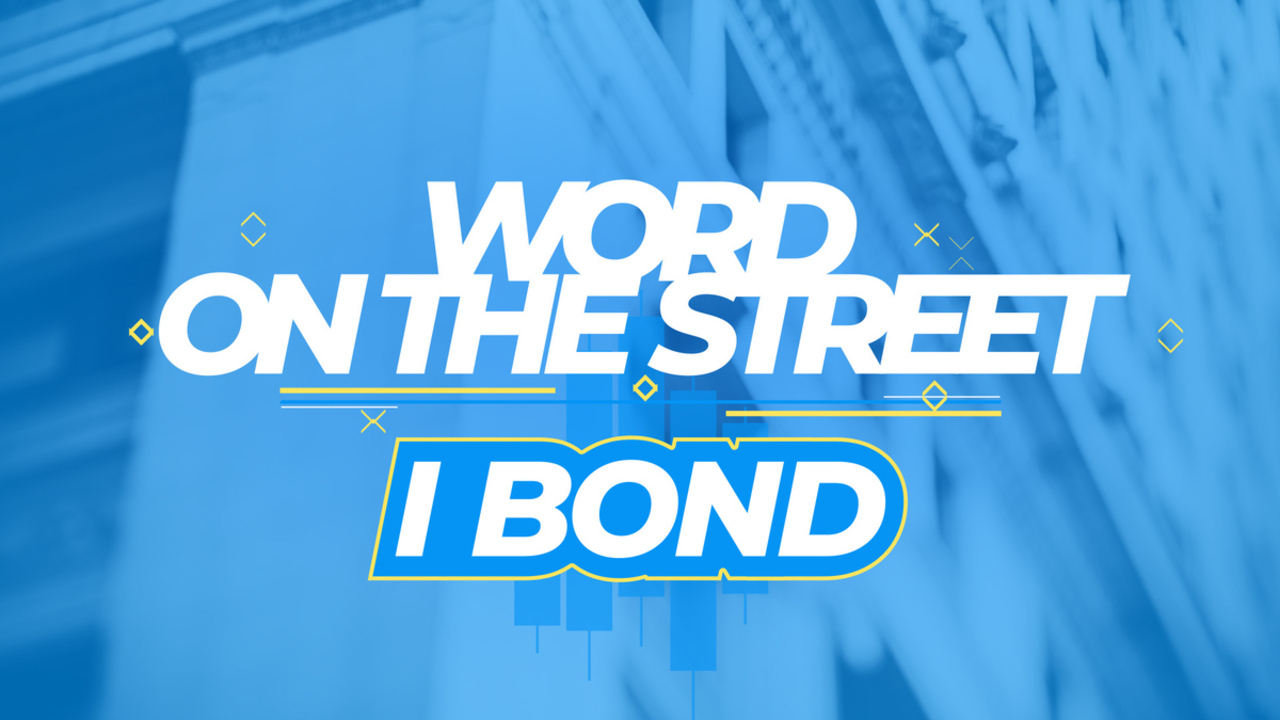
SIMONE DEL ROSARIO: WHAT IF I TOLD YOU THERE’S A *RISK-FREE* INVESTMENT THAT PAYS NEARLY 10% INTEREST!
IT’S CALLED AN I BOND. AND IT’S TODAY’S WORD ON THE STREET.
A SERIES I BOND IS AN INFLATION-ADJUSTED U.S. GOVERNMENT SAVINGS BOND.
WHICH MEANS THEY ARE BACKED BY THE FULL FAITH AND CREDIT OF THE U.S. GOVERNMENT – AND THIS ONE CAN’T GO DOWN IN VALUE.
NEWS CLIP: i in the i bond stand for inflation? It does.
NEWS CLIP: people are looking for every tool in the toolkit they can to defend against inflation so here comes the series i bond.
SIMONE DEL ROSARIO: IF THERE’S ONE GOOD THING ABOUT SKYROCKETING INFLATION – IT’S THIS. THE INTEREST RATE EARNED ON A SERIES I BOND – IS TIED TO THE CONSUMER PRICE INDEX.
SO WHILE INFLATION’S BEEN SOARING – SO HAS THE RETURN ON THIS INVESTMENT.
I BOND INTEREST IS BASED ON A FIXED RATE – WHICH CAN’T GO BELOW ZERO – PLUS AN INFLATION RATE.
THE INFLATION RATE ADJUSTS TWO TIMES A YEAR, IN NOVEMBER AND MAY.
AND THIS MAY IT JUMPED TO AN ALL-TIME HIGH OF 9.6%!
NEWS CLIP: That’s just really insane for about as safe of an investment as you can make.
TOO GOOD TO BE TRUE? HERE ARE THE RULES.
THE MAX ANNUAL PURCHASE IS 10-GRAND PER PERSON – YOU BUY DIRECTLY THROUGH THE TREASURY ON TREASURYDIRECT.GOV.
NOW YOU HAVE TO HOLD THE BOND FOR AT LEAST ONE YEAR SO I BONDS ARE A HOME FOR SPARE CASH, *NOT EMERGENCY CASH.
AND YOU CAN HOLD IT UP TO 30 YEARS.
BUT – IF YOU CASH OUT BEFORE FIVE YEARS – YOU FORFEIT THREE MONTHS OF INTEREST.
AND THE MONEY YOU MAKE ON THE BOND – IS TAXABLE – UNLESS YOU USE IT TO PAY FOR HIGHER EDUCATION COSTS THE SAME YEAR YOU CASH OUT.
NOW THAT YOU’RE CAUGHT UP ON I BONDS, WHAT TERM DO YOU WANT EXPLAINED NEXT IN WORD ON THE STREET?
LET ME KNOW IN THE COMMENTS.










